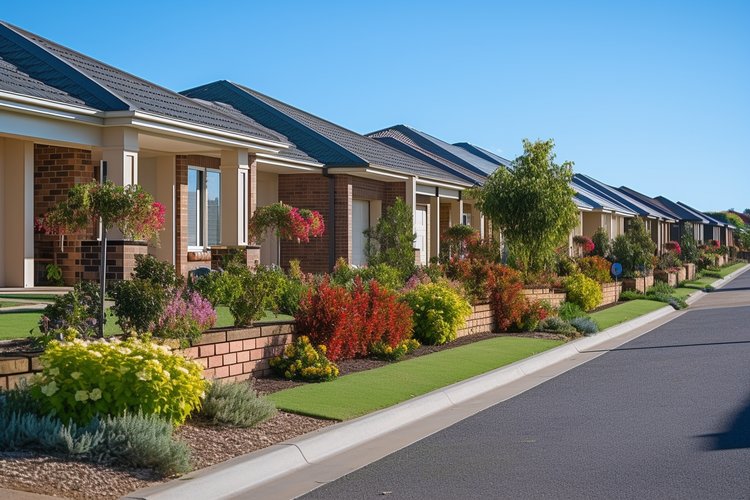Title: Reimagining Suburbia: The Rise of Agrihoods in Real Estate
Introduction: In a surprising twist to traditional suburban development, a new trend is taking root across America's residential landscape. Agrihoods, short for agricultural neighborhoods, are sprouting up as an innovative blend of rural charm and urban convenience. This emerging concept is reshaping how we think about community living, sustainability, and the connection between residents and their food sources.

Historically, planned communities have evolved from the garden cities of the early 20th century to the golf course developments of the late 20th century. Agrihoods are the latest iteration, reflecting modern values of sustainability, health, and connection to nature. The first recognized agrihood, Prairie Crossing in Illinois, was established in the 1990s. Since then, the concept has gained traction, with dozens of agrihoods now existing across the United States.
Core Features of Agrihoods
At the heart of every agrihood is a working farm or community garden. This agricultural center serves as the focal point of the community, providing fresh produce to residents and often to local restaurants and farmers’ markets. The size and scope of these farms vary, from small community gardens to large-scale operations spanning hundreds of acres.
Beyond the farm, agrihoods typically include a mix of housing types, from single-family homes to apartments, catering to diverse demographics. Common amenities often include walking trails, community centers, and educational programs focused on sustainable living and agriculture. Some agrihoods also incorporate elements like farm-to-table restaurants, farmers’ markets, and even small retail spaces.
The Financial Landscape of Agrihoods
Investing in agrihood developments presents a unique financial proposition. While initial development costs can be higher due to the need for agricultural infrastructure, these communities often command premium prices. Homes in agrihoods can sell for 10-25% more than comparable properties in traditional developments, according to industry reports.
For developers, the appeal lies in the differentiation factor. Agrihoods stand out in a crowded real estate market, attracting buyers willing to pay a premium for the lifestyle and amenities offered. The ongoing revenue from farm operations can also offset some community maintenance costs, potentially leading to lower HOA fees for residents.
However, the financial success of agrihoods hinges on careful planning and management. Developers must consider factors like crop selection, farming expertise, and community engagement to ensure the agricultural component remains viable and valuable to residents.
Impact on Property Values and Market Trends
The presence of an agrihood can have a significant impact on surrounding property values. As these communities gain popularity, they often become desirable locations, driving up demand and prices in the broader area. This effect extends beyond the agrihood itself, potentially benefiting property owners in adjacent neighborhoods.
Market trends indicate growing interest in agrihoods across various demographics. Millennials, in particular, are drawn to the combination of sustainable living and community focus. Empty nesters and retirees also find appeal in the active lifestyle and sense of purpose offered by these communities.
Real estate professionals are taking note of this trend. The Urban Land Institute has recognized agrihoods as a significant development in the housing market, predicting continued growth in this sector. As awareness increases, we may see more traditional developers incorporating elements of agrihoods into their projects.
Challenges and Considerations
While agrihoods offer numerous benefits, they also face unique challenges. One of the primary concerns is the long-term sustainability of the agricultural component. Maintaining a working farm requires expertise and ongoing commitment, which can be challenging to sustain over time.
Zoning and regulatory issues can also pose obstacles. Many existing zoning laws are not designed to accommodate mixed agricultural and residential use, requiring developers to work closely with local authorities to obtain necessary approvals.
Another consideration is the potential for conflict between agricultural operations and residential life. Issues like noise, odors, and pesticide use must be carefully managed to maintain harmony within the community.
The Future of Agrihoods
As the real estate market continues to evolve, agrihoods are poised to play an increasingly significant role. The concept aligns well with growing consumer interest in sustainability, wellness, and community connection. We may see variations on the agrihood theme emerge, such as urban agrihoods in city centers or specialized communities focused on specific types of agriculture.
Technology is likely to play a growing role in agrihood development and management. Smart farming techniques, IoT devices for community management, and digital platforms for resident engagement could enhance the efficiency and appeal of these communities.
The agrihood concept also has potential to address broader societal issues. By promoting local food production and sustainable living practices, these communities could contribute to food security and environmental conservation efforts on a larger scale.
In conclusion, agrihoods represent a compelling evolution in residential real estate. They offer a unique blend of rural charm and modern convenience, appealing to a growing segment of homebuyers seeking a more connected, sustainable lifestyle. For investors and developers, agrihoods present an opportunity to differentiate in a competitive market and potentially command premium prices. As the concept continues to mature and evolve, agrihoods may well reshape our understanding of suburban living for generations to come.





